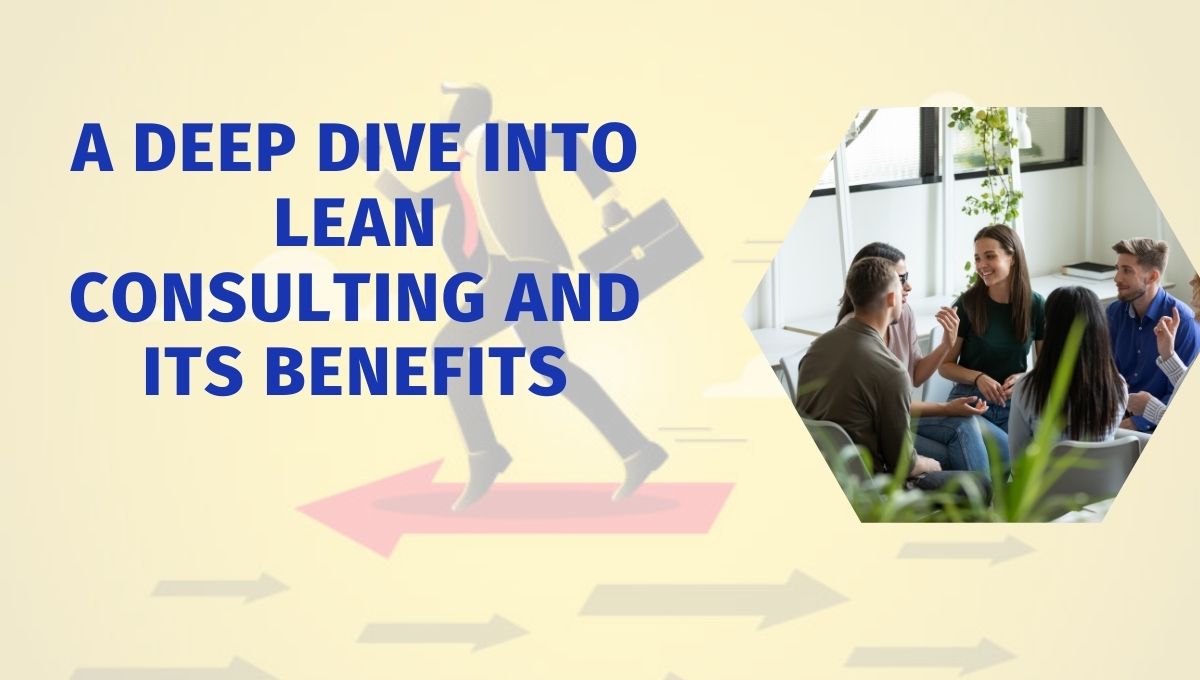
In a rapidly changing business environment, many companies are striving to improve their efficiency and effectiveness. To stay competitive, they explore various methodologies and frameworks designed to enhance performance. One of these is “Lean Consulting”, a powerful approach that enables organizations to streamline operations, minimize waste, and encourage continuous improvement.
In this blog post, we will examine the fundamentals of lean consulting, delve into its benefits, and understand how it can transform your business.
What is Lean Consulting?
“Lean Consulting” refers to the application of lean principles, derived from the manufacturing sector, to any industry. Originating from the Toyota Production System, Lean focuses on maximizing value for customers while minimizing waste. This philosophy encourages organizations to simplify processes, reduce costs, and enhance quality.
Lean consultants strategically analyze business operations and identify areas for improvement. By employing various tools and techniques, they help organizations implement lean principles seamlessly, ensuring sustainable growth.
Key Principles of Lean
Understanding the principles of lean is essential to grasp how lean consulting can benefit an organization. Here are the core concepts:
- Value: Recognizing what the customer values is vital. Organizations must focus on delivering value to their customers by understanding their needs and preferences.
- Value Stream: Mapping out the value stream helps identify each step involved in delivering a product or service. This analysis enables organizations to pinpoint areas of waste.
- Flow: The goal is to create a smooth flow in the value stream by eliminating bottlenecks and interruptions. A streamlined process delivers products more efficiently.
- Pull: Instead of pushing products to customers based on forecasts, lean emphasizes a pull approach. This means producing only what is needed when it is needed, reducing excess inventory and waste.
- Perfection: Lean promotes a culture of continuous improvement, where organizations strive for perfection by routinely identifying and eliminating waste.
Benefits of Lean Consulting
The implementation of lean consulting brings numerous benefits to organizations. Here are some of the key advantages:
- Enhanced Efficiency
One of the most significant outcomes of lean consulting is improved efficiency. By analyzing workflows and eliminating waste, organizations can streamline operations. Employees spend less time on non-value-added activities, which increases productivity.
- Cost Reduction
Lean principles help reduce costs significantly. By minimizing waste and improving efficiency, organizations can achieve considerable savings. Lean consulting often leads to lower overhead costs and improved profit margins.
- Increased Quality
Lean also emphasizes quality improvement. By streamlining processes and enhancing workflows, organizations can reduce errors and defects. This commitment to quality leads to higher customer satisfaction and loyalty.
- Improved Customer Satisfaction
Understanding customer needs is crucial for any business. Lean consulting helps organizations create value for their customers while delivering quality products and services. Satisfied customers are more likely to return and refer others to the business.
- Employee Engagement and Empowerment
Lean encourages teamwork and employee involvement in problem-solving initiatives. When employees feel empowered, they engage more with their work. Lean consulting fosters an environment of collaboration, resulting in a highly motivated workforce.
- Sustainable Growth
By focusing on continuous improvement, lean consulting helps organizations sustain their growth over time. Companies become more adaptable to market changes, leading to continued success in the long run.
- Waste Reduction
A central tenet of lean philosophy is waste reduction. Lean consulting identifies seven types of waste—overproduction, waiting, transport, extra processing, inventory, motion, and defects. By addressing these wastes, organizations can significantly improve efficiency.
Tools and Techniques Used in Lean Consulting
Lean consultants utilize a variety of tools and techniques to facilitate improvements in organizations. Here are some widely used tools:
- Value Stream Mapping (VSM)
VSM allows organizations to visualize their processes, identify bottlenecks, and plan improvements. By mapping out the entire process flow, teams can see where value is added and where waste occurs.
- 5S Methodology
The 5S framework stands for Sort, Set in order, Shine, Standardize, and Sustain. This technique is designed to create an organized, tidy workspace, which is essential for maintaining efficiency and quality.
- Kaizen
“Kaizen” is a philosophy of continuous improvement that encourages everyone in the organization to contribute ideas for enhancement. Regular Kaizen events promote team collaboration and innovation.
- Lean Six Sigma
Lean Six Sigma combines the principles of lean with Six Sigma’s focus on reducing process variation. This blended approach enhances quality and efficiency simultaneously.
- Just-in-Time (JIT)
JIT is an inventory management strategy that aligns raw-material orders with production schedules. By producing only what is necessary, organizations can significantly reduce excess inventory costs.
Steps to Implement Lean Consulting
Implementing lean consulting requires careful planning and collaboration. Here are the typical steps involved in a lean transformation:
- Assess the Current State
Understanding the current processes and identifying waste is the initial step. Data collection and analysis provide insights into areas requiring improvement.
- Define Future Goals
Establish specific objectives and goals for the lean transformation. These milestones guide the process and help measure progress throughout the implementation.
- Develop a Plan
Create a structured plan that outlines key activities, tools, and techniques to achieve lean objectives. This plan should include timelines and roles for team members.
- Engage Employees
Involve employees in the process to foster engagement and collective ownership. Training and workshops can help teams understand lean principles and embrace the transformation.
- Implement Changes
Put the plan into action by implementing the necessary changes in processes, workflows, and systems. Monitor the progress and make adjustments as needed.
- Measure and Evaluate
Measure the outcomes of the lean implementation using key performance indicators (KPIs). Evaluating performance helps identify success areas and any further modifications needed.
7. Sustain Continuous Improvement
Lean is not a one-time project but an ongoing journey. Organizations must continue to seek improvements, ensuring a culture of continuous growth and development.
Conclusion
Lean consulting serves as a transformative methodology for organizations striving to improve their performance and efficiency. By focusing on delivering value, reducing waste, and promoting engagement, businesses can create a sustainable competitive advantage.
The combination of tools like value stream mapping, Kaizen, and 5S makes it easier for organizations to adopt lean principles. The journey may require commitment and effort, but the rewards are well worth it.
In today’s dynamic business landscape, embracing lean consulting can unleash an organization’s potential, leading to improved efficiency, lower costs, and enhanced customer satisfaction. If you’re considering lean consulting, remember, the first step towards transformation is acknowledging the need for improvement.
Through collaboration, commitment, and a focus on perfection, organizations can navigate their lean journey and emerge more robust and resilient in the ever-evolving marketplace.
Unleashing Potential For more information on Lean Consulting and its benefits, click the link below: https://www.ribcon.com/

